No Results Found
The page you requested could not be found. Try refining your search, or use the navigation above to locate the post.


Longer lengths are out and the buzzcut is back in a big way, if search data on Google is anything to go by. Following the reveal on social media of Mr. Styles’ new look, searches for ‘buzzcut hair’ have risen 158 per cent worldwide in the last week. New research by hair salon comparison site PriceListo reveals that online searches for ‘buzzcut’ skyrocketed to over double the average volume in one week, with searches for ‘Harry Styles hair’ also increasing by a 205 per cent.
While hair pros across the globe will be familiar with the iconic cut, when it comes to delivering a brilliant buzzcut, there is an art to doing it the right way. “When executing these cuts, despite claims of quick simplicity, it’s crucial to take your time to avoid missing hairs,” says It List The Business Builder 2023 winner, Charles Rose of Crate Chesire. “Executing a buzzcut requires attention to detail, thorough consultations, and consideration of the client’s preferences for length and style,” he adds. “Regular maintenance, proper aftercare, and communication about expectations contribute to a successful buzz cut experience.”
Though not so straightforward as it may initially seem, for many clients it gives a chance to press reset on their style. “For my clients it’s always a good way to start again when they are unsure what style to go for next,” says Most Wanted Legend, Jody Taylor. “They have to go through so many different lengths when growing it out, so sometimes they will find a style they may not have ever thought about.”
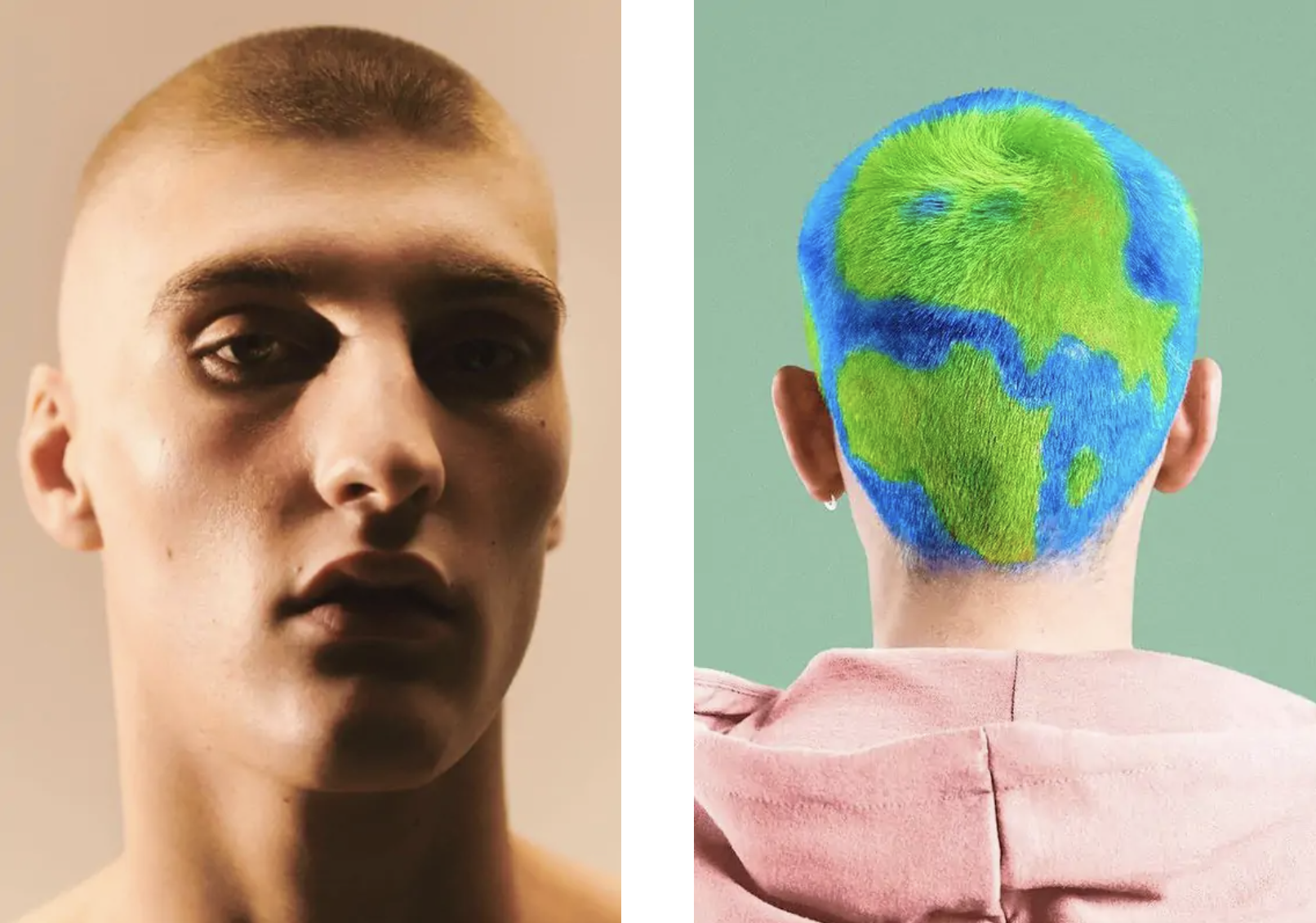
Before reaching for the clippers, Charles advises checking the client’s hairline and preparing them for potential changes to ensure a thorough consultation.
When it comes to cutting techniques, move the blade or guards in all directions to achieve a uniform length. “Don’t just take the guards upwards; go against the hair growth when needed,” he states. “Discuss with the client whether they prefer sharp lines or a faded look around the front and back, using a razor for precision.” It’s also important to consider how short they want to go or if they prefer a gradual taper. “Buzzcut techniques, including fading and tapering, can be applied to soften or sharpen the overall look,” Charles adds.
Managing buzzcuts post-appointment will vary for each client. Charles points out that while some may appreciate the quick regrowth, others will prefer a more regular schedule. “Advise clients on the potential need for more frequent visits compared to their previous style,” he advises.
When advising on proper after care, always recommend a scalp-friendly shampoo and keeping head and hair hydrated. Depending on the desired length, product application is possible. For extremely short cuts like a grade two, keeping the scalp hydrated is essential to prevent dryness.
Though there may be more to the buzzcut than meets the eye, the roots in freedom and empowerment remain as true today as when the radical cut became popular with subcultures during the ’50s and ’60s. “If you haven’t shaved your head before it’s definitely something you need to do at some point in life – I always find it quite liberating with my own hair,” adds Jody.
Fellow Most Wanted winner and BaByliss PRO ambassador Ky Wilson also appreciates the power in starting from scratch. “Amen to this! Remove all the sins,” he exclaims. “Anyone that mentions it in my chair I give them the clippers and get them to do the first bit themselves just to feel the feels. Then I take over of course!”
The page you requested could not be found. Try refining your search, or use the navigation above to locate the post.
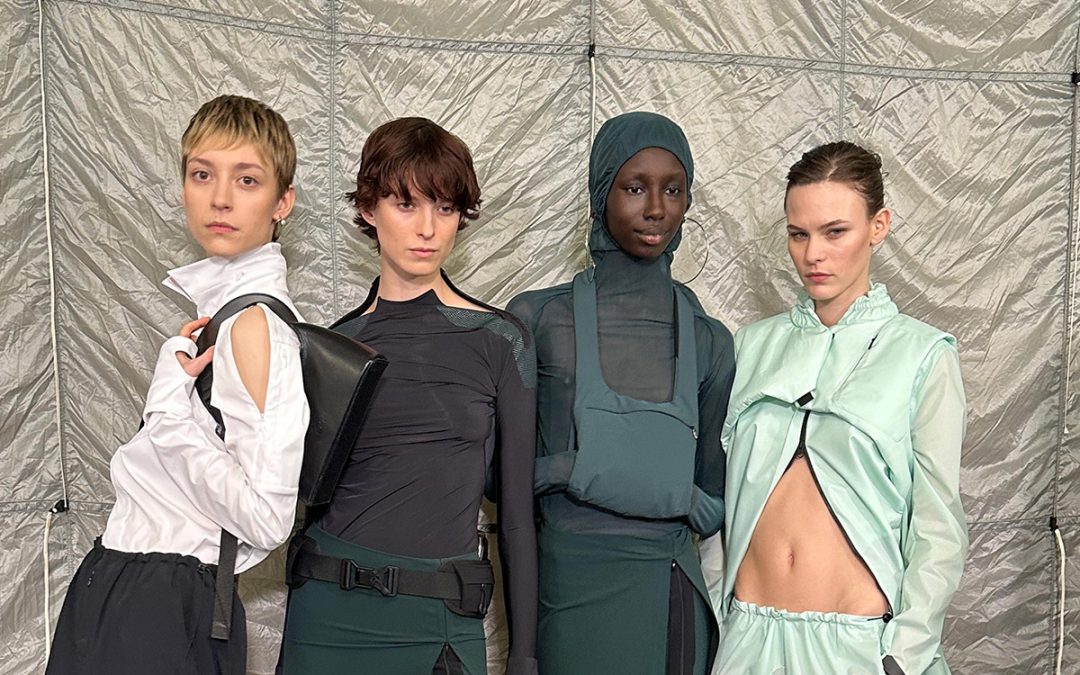
Fashion East has a reputation for giving a voice to young fashion creatives, steering the conversation, and highlighting the most innovative new names, with inspirational ways of spotlighting their work across Fashion Week.
Flying in from Hollywood, working alongside two different designers and co-ordinating a hair team for two shows seems like no easy feat, so we caught up with session and celebrity hairstylist Mark Hampton backstage at London Fashion Week to find out just how he works his magic.
Creative HEAD: Firstly, what does 40 years of London Fashion Week mean to you?
Mark Hampton: It means it started before I was born! But it also means heritage. I trained at Vidal Sassoon – his connections with fashion were so deep. For me he was the first person who transcended fashion and film and art. His inspiration for Bauhaus and cutting Mia Farris’ hair for Rosemary’s Baby were things that made me go ‘wow! This is where you can go with this job?’
CH: Is that what sparked your interest in taking your session work further?
MH: Yeah, and then working with Guido. I could see the industry from the true creative perspective that it should be.
CH: So, how do you navigate working with two designers for one show?
MH: I have a lot of ADD so I don’t think it really matters for me. I enjoy it more; I like the diversity and the challenge of trying to pull off two shows (normally we do three!). For me, it feels more like a show, the atmosphere is better because there’s less focus on one specific thing and there is more of a vibe.
CH: How do you keep the vibe positive and the team calm?
MH: Good assistants! My first assistant Clare [Hurford] is a legend – she really helps me with the production, separating the team and finding the strengths and weakness to play in our favour. When you’re doing two shows, the hair is very different. Olly’s show is predominantly guys, so you need barbers and people who are strong in cutting, whereas Johanna’s is more about styling, so you need people with a different mindset.
CH: How have you approached the hair looks for Fashion East?
MH: I think London is more about selling a character instead of selling clothes. For example, with Johanna’s collection, the clothing has a big focus on streetwear and functionality but on a very elegant level, so the hair must really reflect that character. You want to get into their psyche, what would they do if they were wearing these clothes? Did they have their hat on? Were they cycling and took their helmet off, and what would their hair look like? I think it’s important for Johanna that the person that wears her clothes looks like she could have done her own hair.
CH: We heard you’ve been using the Supernova Pro…
MH: Yes, it’s so fun! It’s so nice to have something that really works! And the fact that it’s professional means it’s going to do what I need it to do.
CH: How did you use it on the looks for Fashion East?
MH: We’ve straightened a few of the girls’ hair. On some of them that already had straight hair, we added a bit of texture as well. Then after I did the chignon, I used the straightening iron to accentuate some of the straighter pieces.
The acclaimed session stylist may reference his troubled past in his work, but the results are always forward-thinking.
Get the lowdown on the key hair trends spotted on the catwalks at London Fashion Week A/W24 shows.
The Scottish session stylist and Tim Walker collaborator is operating at the upper echelons of fashion once more.
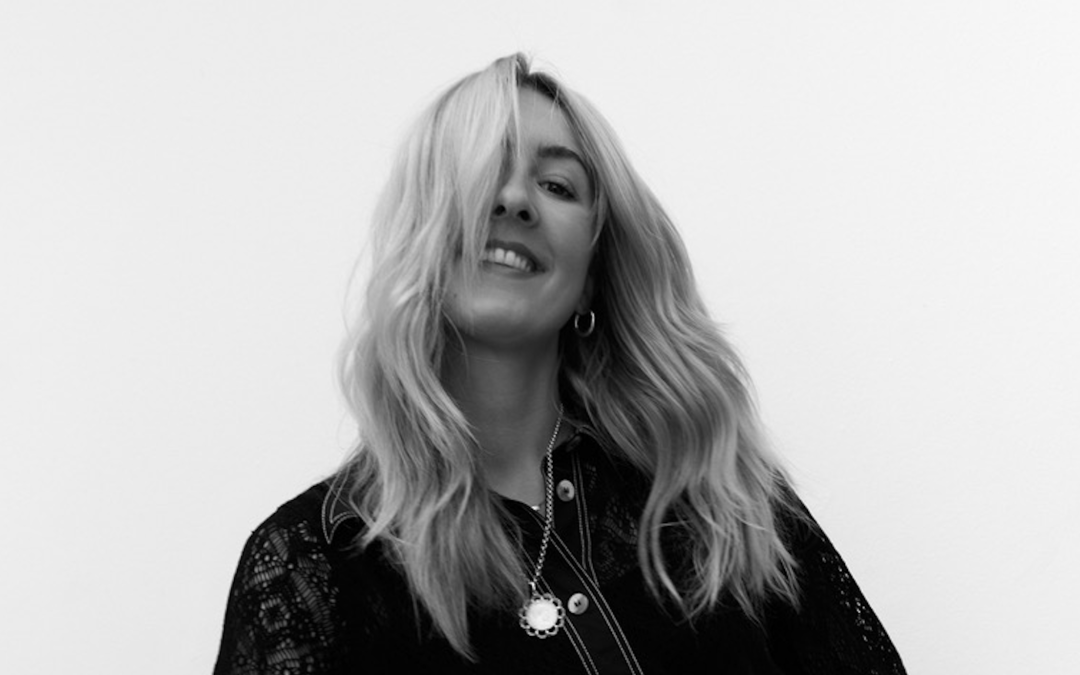
We all know the importance of finding inspiration. It’s a powerful force that drives creativity, motivation, and the generation of new ideas. It often involves a deep emotional or intellectual connection that sparks enthusiasm and a sense of purpose. Finding inspiration can be a highly personal and subjective experience, but what happens when inspiration dries up? Even with the best will in the world, all artists experience periods when inspiration just isn’t there. What can colourists do when it happens?
Switch up your tools
Why should we be limited to a tint brush? It’s fun to experiment with different sized paintbrushes; different angles can create various blends and placements. Sponges are a great way to create seamless freehand blends, making the most commercial applications fun.
Play with paints
Truly understand your colour wheel; it’s essential to know this inside out to take your formulas to the next level. When looking to customise shades, play with acrylic or water paints to understand how to create the most unique tones. For example, while working on different shades of greens, I found that adding a dot of red to my formula created a more muted beige effect, giving me the perfect pistachio.
Get swatching
Personalisation is exactly where colour is; crafting colour for the individual and giving our clients a reason to return to us. After playing around with paints, I love to test my shades on swatches to see how they transfer onto hair. This gives me a starting point, allowing me to keep tweaking until I find that perfect shade.
Press pause
To be creative, we need downtime. It’s essential to pause and stop. I find new inspirations spark when I take a break from social media and immerse myself in something other than hair – whether that be watching a documentary or taking a walk and observing people. Recently, I was inspired by a group of students who had been colouring their hair themselves. It was super visual and made me consider how I could recreate it.
Inspiration can’t be forced; it needs to flow through you. When life is busy or there’s a deadline attached it can be difficult to feel inspired. Looking at colour through a different perspective, stepping away from the situation or trying something new, gives internal space for creative thinking and fresh ideas to come alive. Inspiration can’t be forced but it can be encouraged, it needs to be nurtured. Stay open and stay curious.
The page you requested could not be found. Try refining your search, or use the navigation above to locate the post.
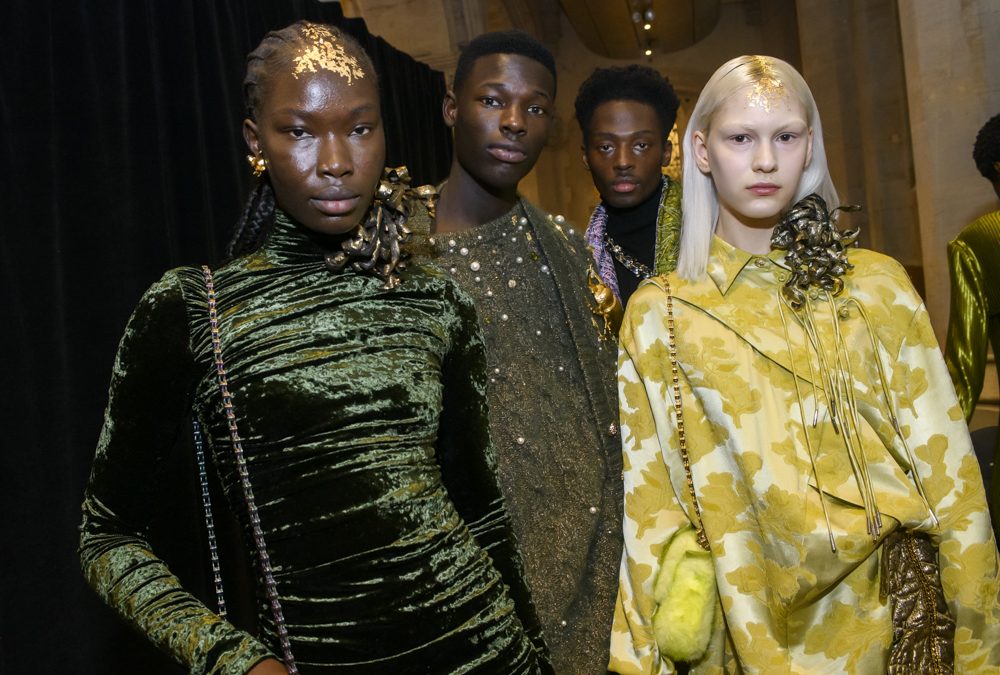
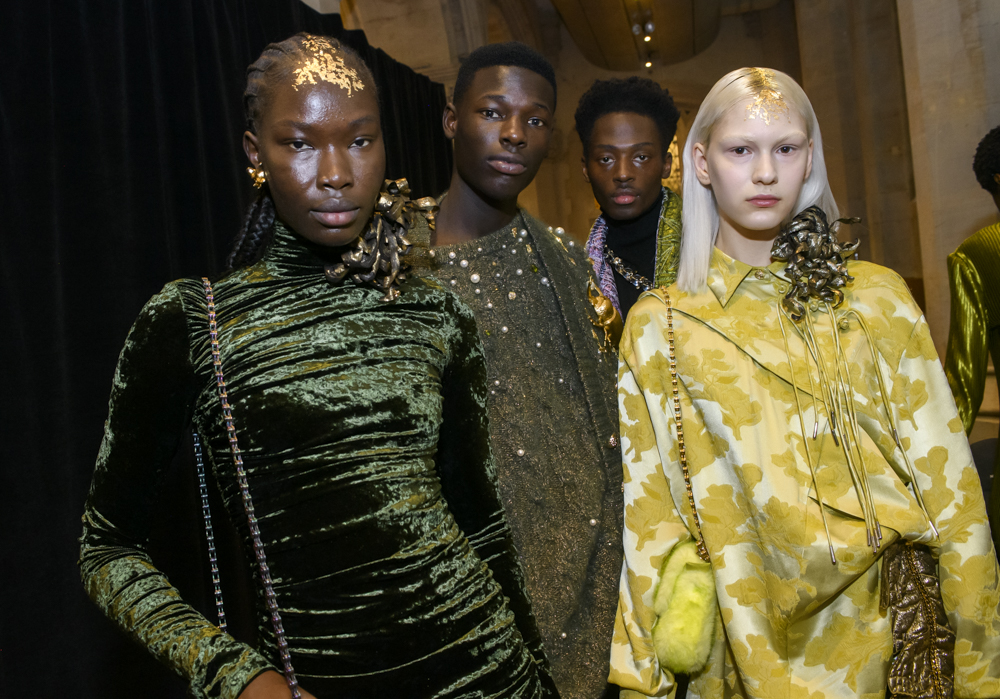
Backstage at Mithridate A/W24
As London Fashion Week concludes, we’re reflecting on the biggest trends spotted on the catwalks at the A/W24 shows. A melting pot of creativity, this season saw a number of stand out styles, including metallic foiling, the return of the deep side parting and a celebration of natural texture. Here’s the looks which will be setting social media ablaze come A/W24…
At New York Fashion Week the use of gold foil was seen at Christian Siriano, with Lacy Redway adorning models with foiling on buns and at the roots. Not be to be outdone by our American counterparts, the session world in London also embraced the intricate foiling technique this season, with both gold and silver details appearing across the weekend.
At Mithridate, Johanna Cree Brown was inspired by statues of ancient Buddhas in the jungles of Asia and the gold patina weathered with moss and slight decay. Using L’Oréal Professionnel Paris products, we saw gold leaf applied in broken pieces to reflect the patina on ancient statues. Using a brush and bowl, Tecni.ART Fix Max gel was applied to the centre parting, before pieces of gold leaf were added at the parting to catch the light, using the handle of a tail comb to press into place. The hair was finished off with Ellnet Spray to keep everything in place.

Photography by Rebecca Maynes at Chet Lo A/W24
Meanwhile at Chet Lo, it was silver leaf in the spotlight. Hair lead Anna Cofone worked with Authentic Beauty Concept products to add silver leaf to the hair as a nod to the collection. It was a genius way of referencing the concept of clothes becoming armour, which is also reflected in the slicked-back spiked graphic shapes created. “My relationship with Chet has spanned more than three seasons and it’s one that I really treasure, as there is absolute creative trust and a genuine authenticity within the design process,” Anna said. “It was amazing to have the support of Authentic beauty Concept, the products worked perfectly for what we needed to achieve.”
It’s an age old debate between generations as to what parting is ‘cooler’ but if this season’s shows are anything to go by, the side parting is back on top for A/W24.
Spotted on the catwalk of Harris Reed A/W24 was a more subtle take from Ali Pirzadeh, crafted using Dyson Professional tools. In harmony with the sweeping drapes and billowing volume in the garments, Ali introduced a structured side parting with an ‘S’ shape lift at the hairline, and a healthier looking, high shine blow-dry finish, created using the new Dyson Supersonic r professional hair dryer. The graphic take on a classic up-do incorporates a sense of masculinity, nodding to Harris’s fluid approach to gender.

Images: Backstage at Harris Reed A/W24, model at Eudon Choi
Over at Eudon Choi, hair lead Adam Garland also used a sweeping side parting as a core detail. “The overall look is designed to have no hard lines,” Adam explained. After creating an irregular parting on the left, Airy Texture Spray from Authentic Beauty Concept was used to create a dry, dusty texture. Next, a ponytail was created at the nape area. “We then created texture on the right-hand side by rubbing a balloon up and down the hair shaft to create static, using a light mist of Working Hairspray then repeating to lock in the new texture,” he added. To complete the look, hair was placed over the right side of the face and random pieces were tucked to create a veil over the face.
Likewise, a sweeping site parting and low ponytail were core details seen at KNWLS, with hair lead Mustafa Yanaz using Session Label from Schwarzkopf Professional to achieve the lived-in finish. “Imagine a New York, Upper East Side girl with beautiful hair. She goes to a second party and ties the hair in a knot,” Mustafa explained. “She looks like she partied already, but the hair still looks healthy and shiny.”

Images: Photography by Alex Barron-Hough backstage at KNWLS A/W24
While some shows and presentations offered statement styles, with others a ‘less is more’ approach was seen, as hair teams looked to enhance the model’s own natural texture. At Supriya Lele, Syd Hayes created “freshly washed and brushed out, beautiful hair.” Syd and his team worked with a centre partings on all of the girls, with freshly washed hair dried flat using the new BaByliss PRO Falco dryer and nozzle attachment, and brushed to create fluffiness and texture to ensure the look of real-life lived-in hair. To finish the look and add some movement, Syd used the 25mm Titanium Expression Curling Tong to add a very slight bend to the front sections of the hair to frame and open up the face.

Images: Supriya Lele A/W24, 16Arlington A/W24
Similarly, at the 16Arlington show, Sam McKnight and his team delivered a look which personified natural, Cool Girls. It was Inspired by the beautiful models walking in fresh off the street. Some models had their hair de-frizzed and de-fluffed with Happy Endings or Dressed to Kill, smoothing through where needed. Other models had a soft wave added to the front, using a straightening iron. An S shape was created with the section, before gently tapping with the straightener to create texture.
The acclaimed session stylist may reference his troubled past in his work, but the results are always forward-thinking.
Get the lowdown on the key hair trends spotted on the catwalks at London Fashion Week A/W24 shows.
The Scottish session stylist and Tim Walker collaborator is operating at the upper echelons of fashion once more.
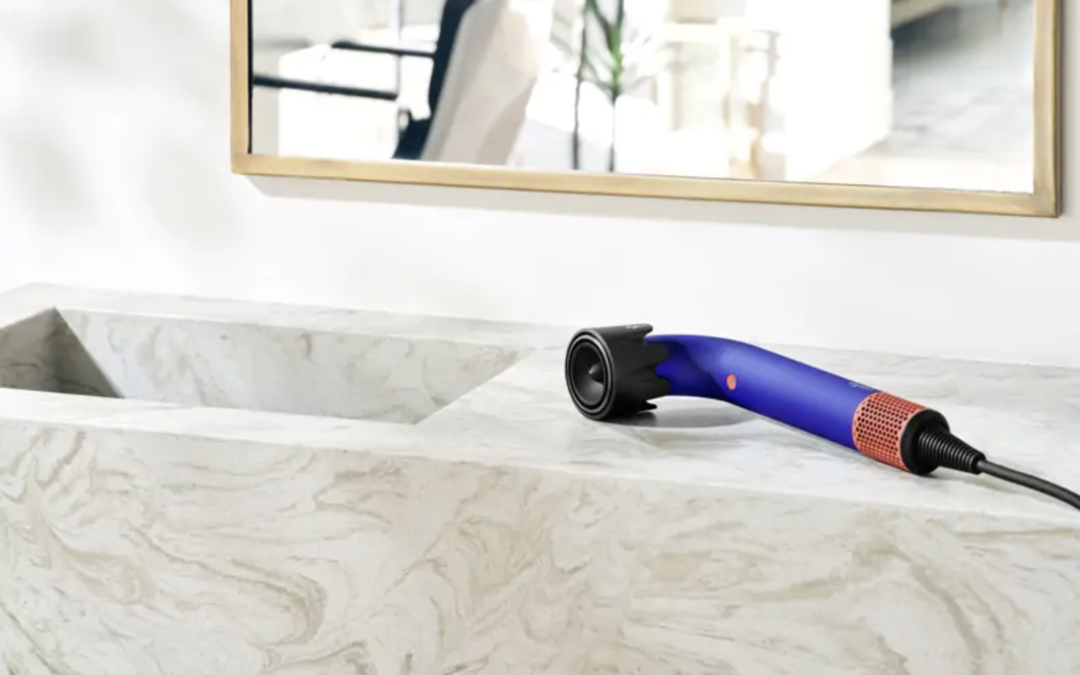
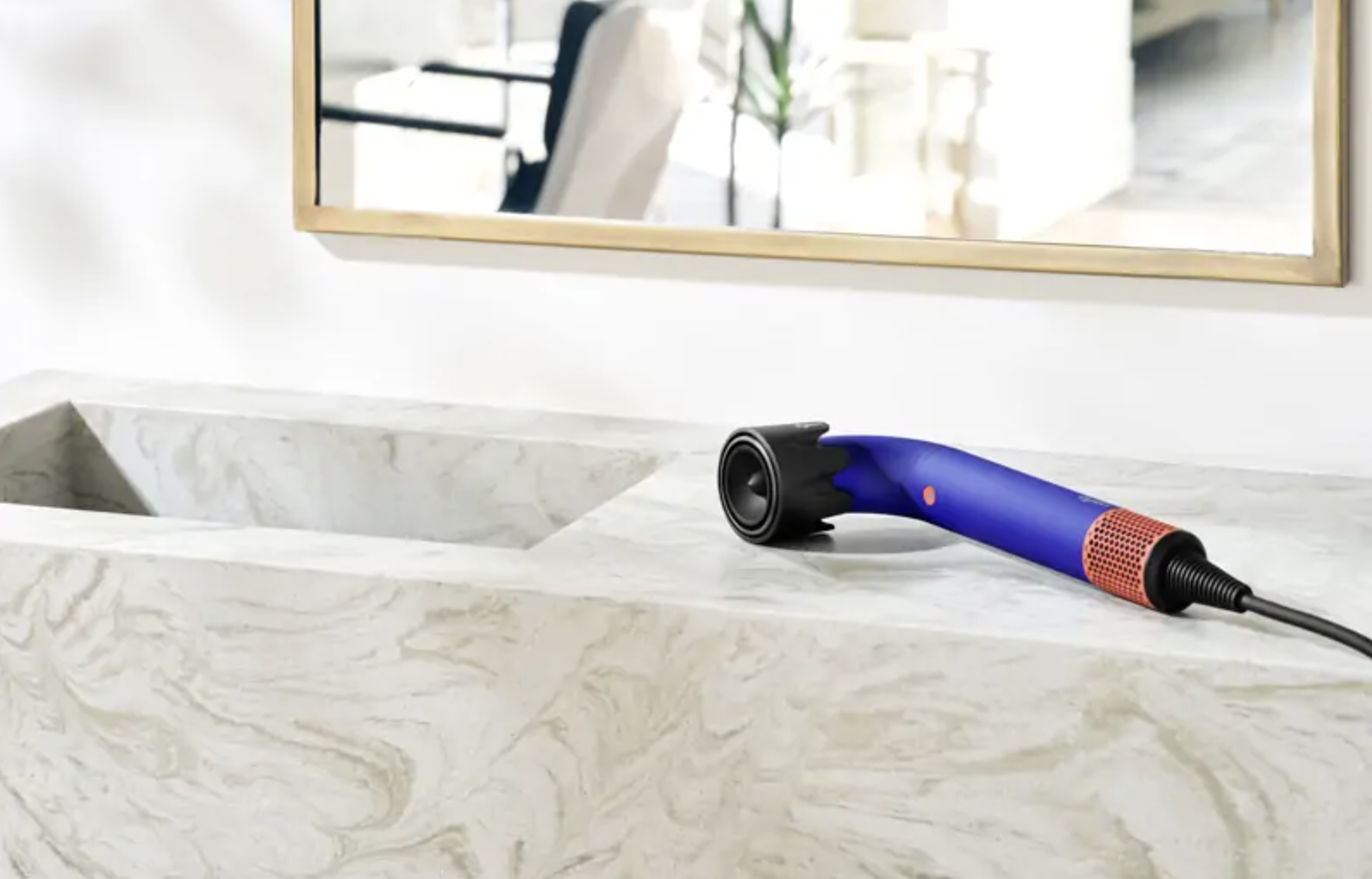
At a glance: Dyson Supersonic r professional hair dryer
It has a new ergonomic design
The Dyson Supersonic r has been designed ergonomically in an ‘r’ curve and, at 325g, weighs less than a can of hairspray. The shape allows stylists to reach where it’s normally difficult, for better control when styling hair, and for better comfort while doing so.
There’s more even heat thanks to new heaters
The new curved heater ensures the dryer heats the airflow more evenly, with no hotspots. For stylists, this means you can rely on more even temperatures (including when using the attachments), a higher temperature for faster drying and styling, with no heat damage. The dryer checks the temperature constantly using Dyson’s intelligent heat control – seen in its other hair tools, too – measuring air temperature more than 20 times a second.
The attachments have sensors… and they’ll remember how you used them
There’s a range of attachments that have integrated Radio Frequency Identification sensors, which communicate with the dryer, automatically adjusting the motor and the heater to deliver what Dyson engineers have set as the ‘optimal’ airflow and temperature. For example, the diffuser is set to low flow and low temperature to reduce frizz and enhance curls without disrupting the curl pattern. In contrast, the rough dry mode uses maximum power heat and flow to minimise drying time but while keeping the airflow controlled. However, stylists can adjust these settings depending on the hair type and style of each client, and the dryer will remember that setting the next time the attachment is added.
Its filter can go longer between cleans
The 3D mesh filter at the bottom of the dryer, designed to capture salon pollutants such as hair and styling sprays, now lasts up to two times longer in-between cleans.
Stylists can join a waitlist here for the new pro-exclusive dryer.
New report looks at economic impact of the Autumn Budget on hair and beauty businesses. The proposed changed outlined in the Autumn Budget will cost the hair and beauty industry £139m, according to a new report from the NHBF.
Session stylists among sharing experiences of unpaid overtime, late payments and toxic working environments
Six fresh faces revealed for year-long programme